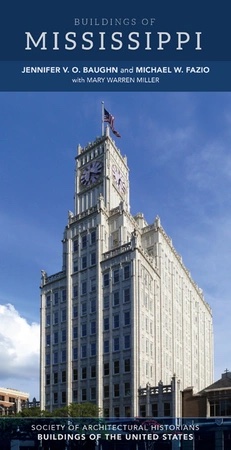
Robert Emmett Lee (1870–1925), Hattiesburg’s first professional architect, attended the St. Louis School of Fine Arts and worked c. 1896–1900 for Gustavus M. Torgerson, designer of Meridian’s Grand Opera House (EM10), before coming to Hattiesburg in 1900. Here he consistently worked in a robust classical style.
This two-story limestone former bank has the look of a gateway or triumphal arch, with two marble Roman Ionic columns set between piers framing the entrance, a popular scheme for banks in the early twentieth century.
At 119 E. Front, Lee’s three-story Odd Fellows Lodge (1907) is an elaborate affair with brick piers beneath cast-stone capitals and tall third-story pedimented windows with sunburst patterns. An early Mississippi example of a concrete-frame “skyscraper,” Lee’s five-story Chicago-style Ross Building (1907; 207 E. Front) has an unusually high ratio of window-to-wall surface for a building of its vintage. After decades of vacancy, it was renovated for apartments in 2013 and its cornice rebuilt.






